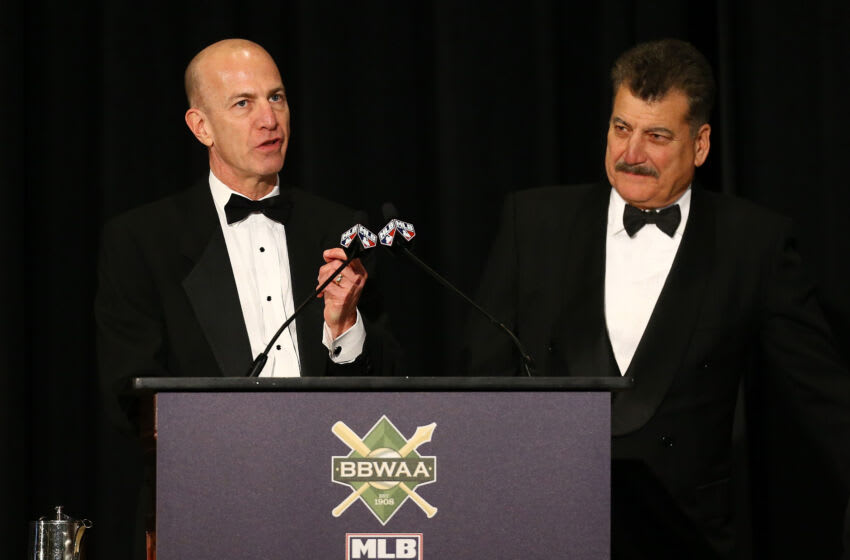In the world of sports broadcasting, few names resonate as strongly as Gary Cohen. With over three decades of experience in the industry, Cohen has carved a niche for himself as a leading voice in baseball commentary, particularly as the play-by-play announcer for the New York Mets. His influence extends beyond just his on-air persona; he has become a mentor and an inspiration for many young broadcasters. This article delves into Cohen’s impact on emerging talent, the skills he exemplifies, and the ways in which he shapes the future of sports journalism.
Gary Cohen: A Brief Overview
Gary Cohen began his career in the late 1980s, and since then, he has become synonymous with Mets baseball. His deep understanding of the game, combined with a unique ability to tell engaging stories, has made him a beloved figure among fans and aspiring broadcasters alike. Some key highlights of his career include:
- Serving as the voice of the New York Mets since 1989.
- Winning several awards, including multiple New York Emmy Awards.
- Establishing a reputation for insightful commentary and a deep connection with the audience.
Cohen’s Broadcasting Style: A Model for Young Broadcasters

One of the most significant aspects of Gary Cohen’s influence is his distinctive broadcasting style. Young broadcasters often look up to him for various reasons:
- Storytelling Ability: Cohen has a remarkable talent for weaving narratives that enhance the viewer’s experience. His stories often reflect not just the game but also the players’ backgrounds, making the broadcast relatable.
- Authenticity: His genuine passion for baseball shines through in every broadcast. Young broadcasters can learn the importance of being authentic and passionate about their subject matter.
- Communication Skills: Cohen excels in articulating complex plays and strategies in a way that is easy for all fans to understand, a vital skill for any broadcaster.
- Interactivity: He engages with fans through social media and during live broadcasts, showcasing the importance of building a rapport with the audience.
Mentorship and Guidance
Beyond his on-air work, Cohen actively supports young broadcasters through mentorship. His commitment to nurturing new talent is evident in various initiatives:
- Internship Programs: Cohen often collaborates with universities and broadcasting schools to provide internships, offering students hands-on experience in sports journalism.
- Workshops and Seminars: He participates in workshops aimed at teaching aspiring broadcasters about the intricacies of the profession, including commentary skills, ethics in journalism, and the importance of preparation.
- Networking Opportunities: Cohen encourages young talent to build connections in the industry, emphasizing the value of relationships in achieving career success.
Case Studies: Young Broadcasters Inspired by Cohen

Several young broadcasters have publicly acknowledged Gary Cohen’s impact on their careers. Here are a few notable examples:
1. Jessica Mendoza
Former softball star and ESPN analyst Jessica Mendoza has often cited Cohen as a major influence. Mendoza, who has made a name for herself in sports broadcasting, credits Cohen for his storytelling prowess and ability to connect with the audience. She emphasizes the importance of being relatable and genuine, qualities she sees embodied in Cohen’s work.
2. Michael Kay
Michael Kay, the voice of the New York Yankees, has mentioned Cohen in interviews as a mentor figure. Kay’s ability to maintain a balance between humor and serious analysis is something he attributes to lessons learned from Cohen, demonstrating the positive ripple effect of mentorship.
3. Sarah Langs
ESPN’s Sarah Langs, a young statistician and broadcaster, has highlighted Cohen’s role in supporting women in sports broadcasting. Langs advocates for diversity in the field, and Cohen’s encouragement has played a part in her journey, showcasing the importance of inclusive mentorship.
The Role of Technology in Modern Broadcasting
As technology continues to evolve, so does the landscape of sports broadcasting. Gary Cohen has adapted to these changes, serving as an example for young broadcasters on how to leverage technology effectively:
- Social Media Engagement: Cohen utilizes platforms like Twitter to interact with fans and promote broadcasts, demonstrating the importance of being present in the digital space.
- Live Streaming and Podcasts: These new formats have opened opportunities for young broadcasters to express their voices, and Cohen encourages experimentation in these areas.
- Data Analytics: With the increasing reliance on stats and analytics in sports, Cohen emphasizes the importance of understanding these tools to provide richer commentary.
Statistics on the Broadcasting Industry

The broadcasting industry is experiencing significant changes, with a growing demand for diverse voices and innovative formats. Some relevant statistics include:
- According to the Bureau of Labor Statistics, employment of broadcast announcers is projected to grow by 7% from 2021 to 2031.
- A survey by the Pew Research Center found that 61% of American adults get their sports news from social media, highlighting the need for broadcasters to adapt to new platforms.
- Women make up only 10% of sports broadcasters, indicating a critical area for mentorship and growth, a gap that figures like Cohen are working to address.
Gary Cohen’s influence on young broadcasters is profound and multifaceted. His unique style, commitment to mentorship, and adaptability in the face of technological advancements make him a role model for the next generation of sports commentators. By embodying the principles of authenticity, storytelling, and engagement, Cohen not only elevates his own broadcasts but also paves the way for aspiring talent in the industry. As the landscape of sports journalism continues to evolve, the lessons learned from Cohen will undoubtedly resonate for years to come, shaping the future of broadcasting and inspiring countless individuals to follow their passion for sports storytelling.





